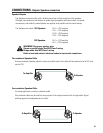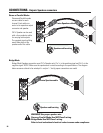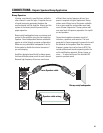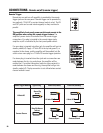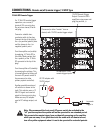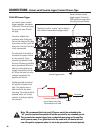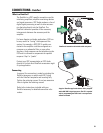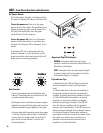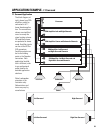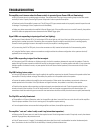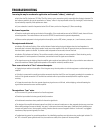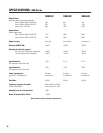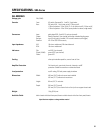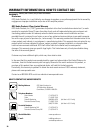
34
TROUBLESHOOTING
The amplifier “cuts-out” when I really crank it up (intermittent operation)-
• Make sure the AC power source is rated for the required current! Avoid using extension cords! If required, use only the shortest
possible 10-gauge heavy-duty extension cords.
• If the AC power source is “sagging” (or drooping) under heavy load, the circuit is overloaded or has other fundamental prob-
lems. Use another circuit or have the circuit checked by a licensed, professional electrician.
The amplifier won’t turn on when the Power switch is operated (green Power LED not illuminating)-
• Verify AC power source is providing required voltage. The simplest test is to plug a known-working lamp into the same outlet
and verify it works. Properly functioning AC power is required in order to operate the amplifier.
• Check each end of the amplifier’s power cord. The AC plug or IEC-type connector needs to be properly inserted. Inspect the cord
for damage. If any damage is found, replace the cord immediately.
• Unplug any device connected to the amplifier’s Remote Trigger jacks. If the amplifier now turns on and off normally, the problem
is with the cables or equipment that was connected to the Remote Trigger jacks.
The Clip LEDs are fully illuminated-
• The amplifier is in Thermal Protection mode. Let the amplifier cool down. Leave the Power on so the fan will cool the amplifier.
Check for proper ventilation. If the fan isn't running at all, the amplifier requires servicing.
• If normal operation does not resume after letting amplifier cool down, the amplifier requires service.
• If the green Power
indicator LED is lit, but the signal LEDs do not light up at all, check the input. Make sure the signal source is
working and try another input cable. Connect the source to another channel or amplifier and verify that it is working properly.
Connect a known good signal source to the amplifier to verify the amplifier is working properly.
• If you are using the XLR or RCA jacks, be sure the connectors are fully inserted at both ends of all interconnecting cables.
• If using the DataPort inputs, make sure connections are tight and that the software configuration in the upstream device (if
applicable) is not muting the signal.
Signal LED’s not responding to input signal level (not lighting)-
• If the green signal LED indicators are lighting normally, the fault is somewhere between the amp and the speakers. Check the
speaker wiring for proper connection at each end and for any damage or breaks. Try another speaker and cable. If your system has
multiple speakers connected in series, any one speaker failure will cause all other speakers (in the same series circuit) to lose
their signal.
Signal LEDs responding to signal level but no output-
• If the red Clip indicator flashes when signal is applied, the amplifier output may be shorted. Disconnect the speaker cables from
the amplifier. If the clip indicator no longer illuminates, the problem is in the speaker cable or the speaker.
• Connect the speaker cables to the amplifier, but not the speakers. Make certain the conductors cannot touch at the uncon-
nected speaker-end of the cables. If the Clip indicator no longer illuminates, the problem is most likely in the speaker.
• Check that the speaker cable connections are tight and properly terminated at each end. Check the speaker cables for stray
strands or breaks in the insulation. Trim off all loose strands of wire and insulate any exposed wire with electrical tape. All
connections should be made with great care and all wire terminations should be carefully checked to ensure quality workmanship.
Clip LED flashing, but no output-



